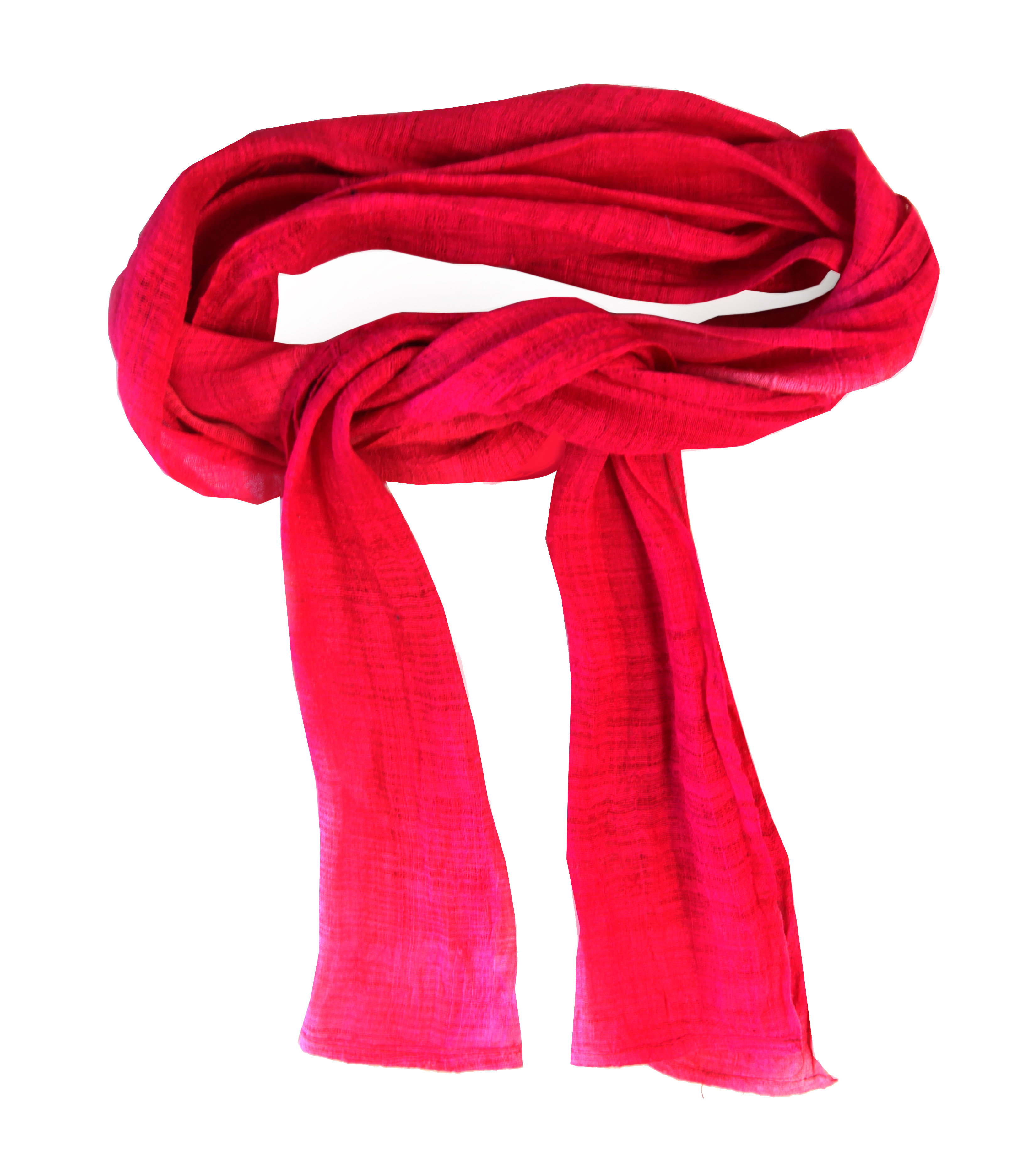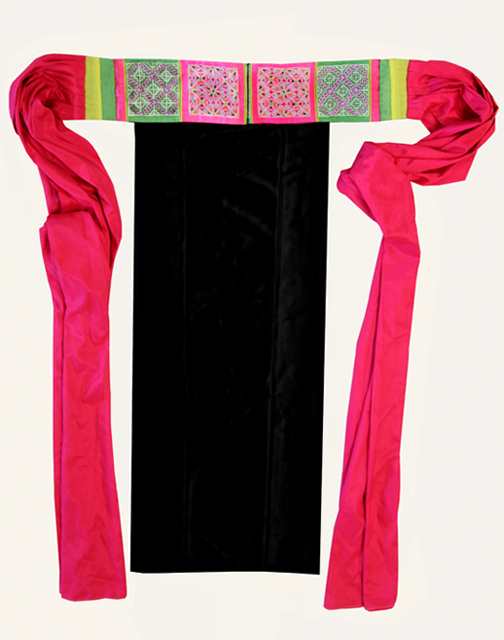Hmong Attire |
|---|
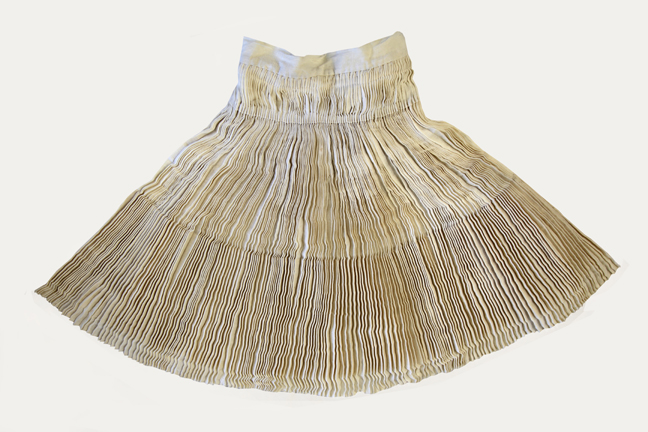 |
HA21: This pleated skirt of hemp fabric is worn by the White Hmong women. Traditionally, a Hmong skirt would have been made from hemp, a plant grown for its fiber. The stems of the hemp plants are stripped, soaked, pounded, and turned into yarn. The yarn is then woven into fabric and bleached until white. Unlike the Green Hmong, the White Hmong until very recently did not embroider or appliqué their skirts.
By an unknown artist, 1980s-1990s, 105x61 cm |
Back to Top |
 |
HA22: This is a Black Hmong pleated skirt from Vietnam. It is done in batik, with some
By an unknown artist, Vietnam, 1940s-1960s, 76x56 cm |
Back to Top |
 |
HA23: This pleated skirt is worn by the Hmong Lees or Sib, as well as Ntsuab (Blue and Green Hmong). Such skirts are colorful and include cross-stitch, appliqué, and batik work. The batik motifs involve diamonds and seeds, and the diamond appliqué motifs resemble batik diamonds. There are also appliqué squares and lines which divide the skirt into three long panels.
By an unknown artist, 1990s, 81x53 cm |
Back to Top |
HA24: This pair of men’s pants is associated with the White Hmong. These pieces are
By unknown artist, 1990s, 51x98 cm |
Back to Top |
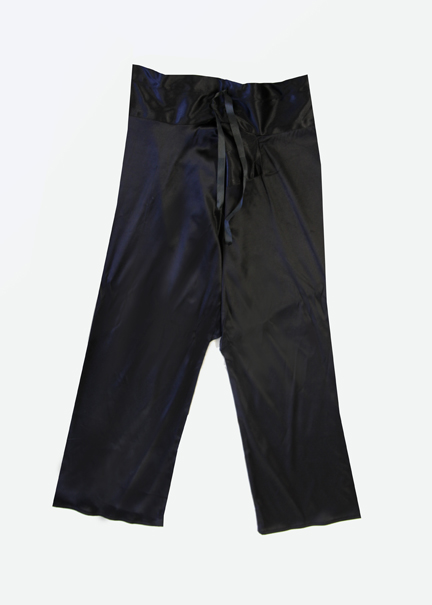 |
HA25: This pair of men’s pants is associated with the White Hmong. These pieces are commonly made from satin and synthetic fabric, but polyester fabric is preferable as it doesn’t shrink. The waist of the pants is often loose, and a siv (belt) is used. The pattern and shape of White Hmong men’s pants are identical to those worn by women but they are larger.
By unknown artist, 1990s, 51x98cm |
Back to Top |
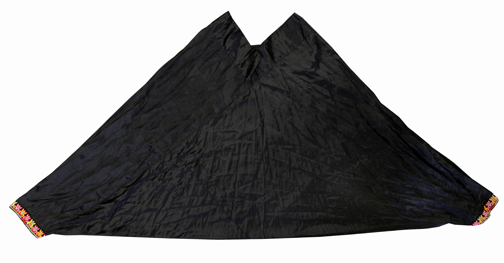 |
HA26: These pair of pants uniquely belong to the Green Hmong of Moos Pheeb, Northeastern, Laos. Green Hmong pants are much bigger, and wider than those of the White Hmong. These are harem pants. These pants are made from black satin fabric. When the pants are in storage, they are folded and twisted. These pants purposely wrinkle when worn. The trims at the bottom of the pants are decorated with cross titch needlework.
By Mr. and Mrs. Zeej Thao, Thailand, 2012, 105x56 cm |
Back to Top |
|
HA27: This piece was made from cotton fabric, and is used as a siv, a red belt intended to |
Back to Top |
|
HA28: This basic apron was sewn with synthetic fabric. There are three sections in the apron including the outer and middle sections. A typical Hmong apron should have three sections that are sewn vertically. The apron is attached to a qua sev, a belt that is traditionally worn on the Hmong women’s waist with a Hmong skirt. The two outer squares of the qua sev are decorated with rickrack and house motifs. They are done in the reverse applique technique. The two inner squares are done in chain stiches, and the motifs are snails.
By an unknown artist, 1980s, apron 93x30 cm, qua sev and sash 63x162 cm |
Back to Top |
HA29: The material used for this sev, or apron, was a glittering, almost metallic synthetic fabric, but the yellow floral tie straps are made of cotton. Although no embroidery or appliqué were applied, this sev is sewn with the traditional three long panels. It was purchased at a Goodwill store in Stevens Point, Wisconsin, as part of a Halloween costume.
|
Back to Top |
HA30: This piece is a Hmong women’s apron made from polyester fabric. It was made to be worn around the waist of the skirt and pants. This style of apron is associated with 2 groups of Lao Hmong – those from both Sayaboury province, and, Luang Prabang, Laos. This is apparent from the blue on the edges, and the black at the channel in the center.
|
Back to Top |
Page 1 << Page 2 << Page 3 >> Page 4 |
